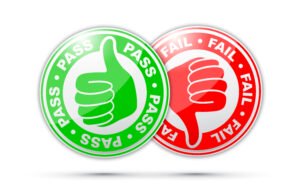“The Magnificent Seven” is Anything But
There was once a time in American cinema where westerns were viable. While the popularity of the quintessential American western has undoubtedly waned, there have been several attempts by Hollywood in recent years to resurrect the once-lucrative genre, from the Lone Ranger reboot in 2013, a resounding defeat both financially and critically, to Quentin Tarantino’s The Hateful Eight, a success story that tripled its budget and received critical acclaim.
The Hateful Eight demonstrated that there are paths yet to tread in possibly the most well-trodden genre of American movie-making; yet 2016’s The Magnificent Seven appears to have taken more cues from The Lone Ranger – to its significant detriment. Of these two examples, one is a slapped-together rehash of a well-received film from 1960 (itself a remake of a 1954 Japanese film) that does nothing to modernize or improve upon western tropes, all the while applying racial tokenism to diversify an underperforming A-list cast. The other is a well-written mystery story that uses the old west as more of a backdrop, rather than the setting, which is the entire point of the film. The Hateful Eight could have worked in almost any setting, and this is the focal point of Hollywood’s errors in producing The Magnificent Seven; the entire film does nothing but showcase great moments from the western genre, without doing anything to modernize or innovate.
The plot of the film is itself almost a trope at this point: seven western archetypes band together to defend a town from a morally corrupt mining baron, becoming friends and making sacrifices along the way. Familiarity isn’t enough to carry a narrative along, but it isn’t enough to kill it either. Boring as the story may be, it may have been made more interesting if the characters had been distinct from what we’ve seen in the westerns of yesteryear. Reliance on stereotypes (both in the literal and racial sense) is a theme throughout the film, and none of the characters are anything we haven’t seen before: Denzel Washington plays the strong and charismatic lawman, Chris Pratt is the gun-slingin’ card shark, etcetera. Peter Sarsgaard plays one of the more interesting characters as corrupt industrialist Bartholomew Bogue, but his entertainment value stems from the fact that he’s basically a cartoon, stopping just short of twirling his mustache and leaving a damsel hog-tied on the railroad tracks.
The characters’ issues don’t stop at them being one-dimensional – the film seems to set up side-plots that are either completely abandoned or not executed fully enough to be satisfying. Ethan Hawke’s Goodnight Robicheaux had the potential to be the most complex character in an overcrowded cast, a veteran of the Confederate army now suffering from post-traumatic stress disorder after fighting at Antietam, but is instead reduced to being the guy that skips town the night before the big gunfight only to heroically return just in time to save the day.
The most confusing aspect of the plot may be the way it addresses Native Americans. Two Comanche characters are the extent of that population’s representation in the film, and of the two, one is the morally detestable henchman of the main antagonist. The other, Martin Sensmeier’s Red Harvest, is one of the titular seven charged with defending the town sought by Bogue’s private army, and upon meeting the rest of our leads he informs them that he was expelled from his tribe due to ideological differences. Exactly fifty percent of the movie’s Native American population is indisputably evil; Red Harvest is one of the heroes because he had character qualities that were undesirable among his tribe, i.e. not being a sociopathic mercenary.
Red Harvest is also the subject of another plot that the movie seems to completely forget about. Upon introducing Vincent D’Onofrio’s incredibly Hodor-esque Jack Horne, we learn that he has fallen on financial hardships after losing his primary source of income – the American government stopped paying bounties for Native American scalps. If you’ve ever actually seen a movie before, this may seem like a potential conflict that the movie will use later on to set up tension between two of of the town’s already-meager defenders, but this entire subject is immediately dropped upon transitioning to the next scene. So a member of the party is Comanche, and another member formerly earned his livelihood by killing Native Americans for a bounty, but that isn’t going to be discussed?
To further supplement our cast of racial stereotypes we have Vasquez, a swaggering Mexican outlaw, and Billy Rocks, an East Asian immigrant and sidekick to Ethan Hawke that specializes in bladed weapons, neither of whom have any kind of development beyond helping Ethan Hawke and Chris Pratt overcome their own personal roadblocks – PTSD and racism, respectively.
Beyond the failures in the character development and narrative, the film is simply overly-reliant on what westerns have already done before. It’s possible that the intention was an homage to a dying genre, but it comes across more like a last gasp, throwing out originality in favor of emulating what has already been done, regardless of whether it worked or not. Rather than attempting to build on its most storied genre, Hollywood instead gave us a highlight reel, far more rusty than rustic. The best possible outcome is that in the future we get more westerns like The Hateful Eight, putting story before setting and characters before stereotypes, rather than more wallowing in past successes.


